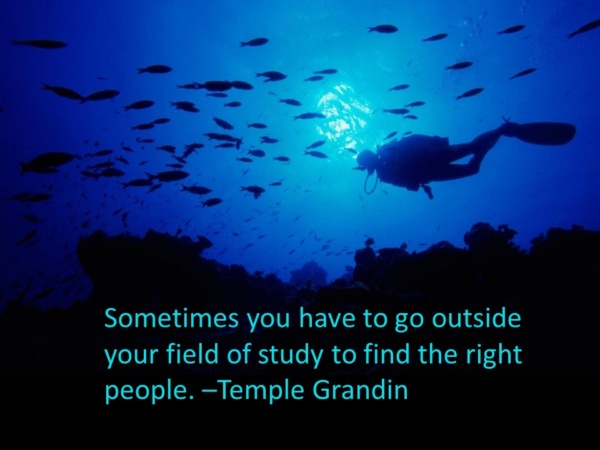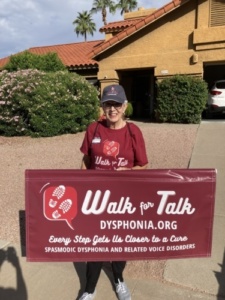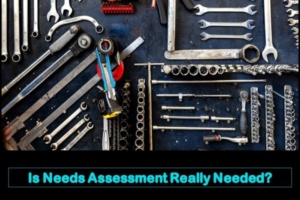
Helping Patients Outside Your Field of Study
I did a fair amount of out-of-the-box marketing for my dental practice in Scarsdale NY. I gave presentations on dentistry at senior centers, chambers of commerce; I wrote informative articles for the Healthcare Newspaper and I manned tables at health fairs (two of which I organized for the Scarsdale Chamber of Commerce.) All of these worked a little bit, but there was no single magic bullet.
There was, however, one unique marketing strategy that I followed which really impacted me. I learned a great deal from this endeavor. The knowledge and connections that I received from this endeavor turned out to be far more valuable than the actual referrals that I received!
While surfing the net one day I came across this unique service that was offered by chiropractor, practice management expert, and speaker from Philadelphia—Dr Len Schwartz (www.drlenschwartz.com). I had never seen such a service offered by anyone—either before or since. For a reasonable fee, Dr. Len’s office arranged 50 introductions with area adjunctive health professionals in the vicinity of my practice. I met with numerous physical therapists, plastic surgeons, chiropractors and acupuncturists.
I only had one bad experience. I went to an office and the waiting room was so filthy that I didn’t even bother to meet the doctor. I cancelled my appointment on the spot.
The program turned out not to be the best source of referrals. Once meeting the health care practitioner, it was difficult to establish an ongoing relationship that would enable exchange of referrals. I was scheduled with 2 and sometimes 3 new health care practitioners to meet each week. It was overwhelming to arrange follow-up meetings as well. However, I learned so much from these meetings that the program was totally worth it! I also gained tremendous exposure within the health care community.
I had no idea that there were so many different ways to practice chiropractic! The practices were all so different! Some employed sophisticated machines, some focused on nutrition, while others specialized in kinesiology. I got to meet the chiropractor for the Yankees—Dr. Louis Bisogni in White Plains, NY–and I ultimately sent him patients. In return, he interviewed me on his TV show! [Part I: https://www.youtube.com/watch?v=vXmbMeAxZMQ; Part II: https://www.youtube.com/watch?v=v5a763J3MIs]
I visited numerous physical therapists and the same pattern emerged. The practices were all different. They specialized in different types of physical therapy. I met one physical therapist who specialized in hand physical therapy. A few years later my office manager needed hand physical therapy. Guess where I sent her!
Dr. Len also arranged for me to visit numerous plastic surgeons. Again, the practices were all different. I noticed that the operating room in one of the offices had four different types of lasers. Obviously, none of the others knew as much about lasers in plastic surgery as he did. Having this knowledge gave me the ability to steer my patients who might need laser plastic surgery to the right office.
I also met with several different acupuncturists. I was impressed with the knowledge and training of one particular one. He was trained classically in the Chinese discipline. However, he was so dedicated that he wanted to do more for his patients. Despite running a busy and thriving practice, he enrolled in Medical School!
It was very clear that if one health care practitioner in a particular discipline could not help a patient, another one in that discipline could. The backgrounds and training of the health care practitioners were completely different. Why should I have been surprised? Isn’t the same true for Dentistry? All dentists are not alike. The majority of dentists cannot save teeth that graduates of the ONWARD program can. ONWARD graduates do not share mainstream paradigms and techniques, so they are able to accomplish what most dentists think is impossible.
As a caretaker, I think it is important that dentists learn as much as they can about dental specialists in their areas. I always strive to discover the best dental specialists in my area. I want to work with the best orthodontists, endodontists, periodontists, TMJ/pain control specialists and oral surgeons. My diagnostic evaluation of patients often includes consultation with these specialists so that I can deliver the best information to them.
I think it is equally important that dentists strive to learn about adjunctive health care therapies and find the best practitioners of these disciplines in their vicinity. It is not unusual for a patient to ask his or her dentist for health care advice that lies within the realm of healthcare outside of dentistry.
One of my very best friends here in Arizona—Esther Zack–has a condition called spasmodic dysphonia or laryngeal dystonia. This disorder affects the voice muscles in the larynx. In spasmodic dysphonia, the muscles inside the vocal folds spasm and make sudden, involuntary movements. This spasm causes voice breaks during speaking and can make the voice appear strained, breathy or trembling (vocal tremor). It is a chronic condition that can develop suddenly, start with mild symptoms, and worsen over time. People with spasmodic dysphonia can develop traumatic scars from the inability to communicate and can retreat inward with poor quality of life.
Like me, I’d be willing to bet that most dentists don’t know anything about voice disorders. However, I have met other people with this condition (including patients!) and never knew it had a name, much less how it is treated. If someone were to ask my advice about treating spasmodic dysphonia, I would have been a deer in the headlights.

I learned from Esther that people with dysphonia should seek relief by visiting neurologists, consulting with speech language pathologists, taking up Tai Chi and joining support groups. Both the Mayo Clinic and Banner Health have excellent programs available to patients with voice conditions here in Arizona. Esther is excited about two new surgeries that have delivered promising results—one in LA and one in Japan. Dysphonia International, a 501 (c)3 organization dedicated to “improving the lives of people affected by spasmodic dysphonia and related voice conditions through research, education, awareness and support” has a great deal of information for individuals who need to know more. In addition, the organization supports important research that is being conducted in the search for cures. (www.dysphonia.org).
Esther co-chairs the committee that leads Dysphonia International volunteers in Arizona in the organization’s fundraising efforts. Of course, I am on the committee, which is planning a local “Walk for Talk” event on October 22 around the lake at the Mercado Del Lago Mall on North Hayden Road in Scottsdale. Similar events are being held worldwide. Sign up to walk, give a donation or sponsor an event by visiting www.dysphonia.org.
It is important to embrace that fact that we dentists are expected to wear many hats. We are primarily experts in dental treatment, but we are also expected to be trusted leaders, role models, confidants, and advocates. “Helping patients” is therefore the best description of what we do. Sometimes that help is not in the form of dental treatment but in the form of advice and assistance with problem solving. Sometimes that help is simply providing an ear to “listen.”
Dr. Irving Shapiro, former Clinical Assistant Professor of Preventive Medicine and Community Health at the State University Medical Center at New York City noted that “the word “doctor” is derived from the Latin, “docco,” which means “to teach.” But the word “teacher,” as well as the word “learning,” means different things to many people. There seems to be agreement, however, that if more citizens had more knowledge, and the will to act in certain areas, we would have healthier communities.” [“Doctor Means Teacher,” The Journal of Medical Education, 1951;2:125–129. https://journals.lww.com/academicmedicine/Fulltext/2001/07000/Doctor_Means_Teacher.13.aspx]
As Doctors it is our duty to teach. Every time we present treatment to a patient we are teaching. It is not my job to push patients into treatment. It is my job to educate patients to make better decisions about what treatment options are best for them. The better I do my job; the more likely they will pursue the treatment I recommend.
A great teacher does not have all the answers. However, a great teacher is willing to do whatever it takes to find the answers. A great teacher knows when that patient is better off in other hands and finds the appropriate referral. A great teacher must, therefore, be a great learner.
It seems that few practitioners are willing to follow through on finding answers to questions, so those who do transcend patient expectations. They demonstrate by doing so just how much they really care. This type of caring is likely to result in more patient referrals of family and friends. But the reward that comes with giving the gift of knowledge is priceless. As my friend Esther says, “Always remember that it’s not the receiving that is so wonderful…it’s the giving!!”
Become the best practitioner in full coverage restorative dentistry that you can be! Don’t settle! Join the ONWARD program and learn how to do crown and bridgework with excellence and confidence, how to save “hopeless” teeth, and how to provide new options for patient treatment that you never thought of. Visit the website and join here: https://theonwardprogram.com/membership/
Dr. Feinberg is also available to give presentations. His CV and speaker packet is posted on the website. (https://theonwardprogram.com/about-dr-feinberg/) Dr. Feinberg can be reached at info@theONWARDprogram.com.



